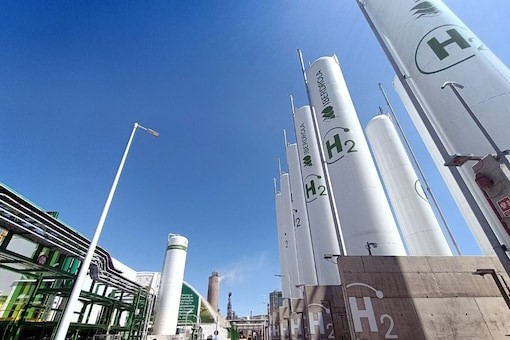Description

Disclaimer: Copyright infringement not intended.
Context
- Scientists looking for fossil fuels beneath the ground of northeastern France have discovered large reservoir of hydrogen.
- According to the initial calculations, it is one of the largest deposits of “white hydrogen” ever discovered, estimated to be between 6 million and 250 million metric tons of hydrogen.
- White hydrogen, also referred to as “natural,” “gold” or “geologic” hydrogen, is naturally produced in the Earth’s crust and is considered a potential clean energy.
Details
- Scientists discovered a significant reservoir of white hydrogen during an assessment of methane levels in the Lorraine mining basin.

Understanding White Hydrogen and Its Significance
Nature of White Hydrogen:
- Natural hydrogen, also known as white or gold hydrogen, occurs naturally on or within the Earth's surface, distinguishing it from laboratory-produced or industrial hydrogen.
- Although abundant in the universe, it typically exists in combination with other molecules.
Potential Applications in Industries:
- White hydrogen's discovery has implications for various industries, including aviation, shipping, and steel-making, as it can serve as a clean energy source.
Classification of Hydrogen Types:
- Different types of hydrogen, such as "gray," "brown," "blue," and "green," are classified based on their production processes and environmental impacts.
- White hydrogen's natural occurrence distinguishes it from other forms, making it an untapped and potentially abundant source of clean energy.
Global Implications and Utilization of White Hydrogen:
- Companies like Gold Hydrogen in Australia and Koloma in the US are actively involved in extracting and utilizing white hydrogen for various energy applications.
- The increasing focus on white hydrogen highlights its potential to revolutionize the energy sector, offering a cost-effective and eco-friendly alternative to traditional energy sources.
Origins and Sources of Natural Hydrogen:
- Various natural processes contribute to the formation of natural hydrogen, including degassing from the Earth's crust and mantle, reactions with rocks, and interactions with water and minerals.
- The involvement of biological activities, radiolysis, and decomposition processes in the generation of natural hydrogen from organic matter and mineral structures.
Reserves and Global Distribution:
- Significant reservoirs of natural hydrogen have been identified in various countries, including France, Mali, the United States, and Russia, although accurate assessment of their potential remains challenging.
- The challenges associated with extracting natural hydrogen from various geological environments, including those on the ocean floor and within sedimentary basins.

Extraction Methods and Characteristics:
- The continuous generation of natural hydrogen from various geological sources, including hydrogen emergences on mid-ocean ridges and processes like serpentinization.
- The distinct properties of natural hydrogen, including its high solubility in fresh water, especially at considerable depths, with an increase in solubility corresponding to increased pressure.
Environmental Benefits and Competitive Advantages:
- The environmentally friendly aspects of natural hydrogen, with no CO2 emissions, and its competitive viability compared to traditional steam reforming methods, particularly in co-valorization applications.
|
PRACTICE QUESTION
Q. Discuss the concept of 'White Hydrogen' and its significance in the context of the global energy transition. What are the challenges associated with its production and utilization, and how can these be addressed to ensure a sustainable energy future? (250 Words)
|











